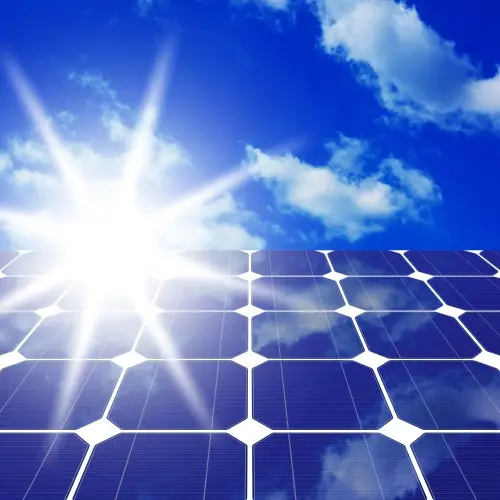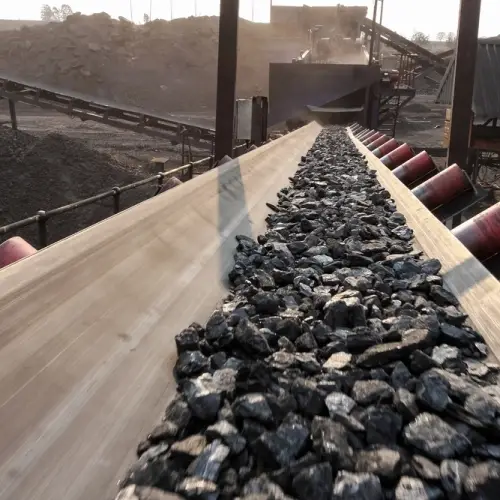
In a world where economic growth and sustainability must go hand in hand, eco-efficiency has become a fundamental pillar for companies and organizations.
This concept seeks to maximize production using the least amount of resources possible, minimizing environmental impact and promoting the responsible use of materials, energy and water.
Implementing eco-efficient processes not only contributes to reducing polluting emissions and optimising resource consumption, but also drives innovation, improves competitiveness and generates long-term economic benefits. From energy efficiency to recycling and proper waste management, there are multiple strategies to integrate eco-efficiency into the different productive sectors.
In this article, we will explain in depth what eco-efficiency is, how eco-efficient processes are applied and what their benefits are for companies, society and the environment.
Definition of eco-efficiency
 Eco-efficiency is a business and production approach that seeks to maximize performance by using the least amount of resources and generating the least possible environmental impact. Its objective is to combine economic growth with sustainability, reducing the consumption of energy, water and materials, minimizing polluting emissions and efficiently managing waste.
Eco-efficiency is a business and production approach that seeks to maximize performance by using the least amount of resources and generating the least possible environmental impact. Its objective is to combine economic growth with sustainability, reducing the consumption of energy, water and materials, minimizing polluting emissions and efficiently managing waste.
This concept is based on the premise of "doing more with less", optimizing processes to improve productivity without compromising the ecological balance. Eco-efficient strategies include the use of renewable energy, energy efficiency, recycling, waste reduction and sustainable product design.
In the business world, eco-efficiency not only contributes to preserving the environment, but also allows for reducing operating costs, fostering innovation and improving competitiveness. Adopting it is an essential step towards ensuring sustainable and responsible development towards the planet.
Eco-efficient processes
Eco-efficient processes seek to optimize the use of natural resources and minimize environmental impacts without compromising a company's productivity and profitability. Below are some key examples:
1. Optimizing energy efficiency
Reducing energy consumption in production processes not only reduces operating costs, but also reduces the company's carbon footprint. Some strategies include:
 Use of low-consumption LED lighting in factories and offices.
Use of low-consumption LED lighting in factories and offices.- Incorporation of highly energy-efficient equipment , such as low-consumption motors and intelligent air conditioning systems.
- Implementation of energy management systems (EMS) , which monitor and optimize energy use in real time.
- Using renewable energy , such as solar panels and wind turbines, to reduce dependence on fossil fuels.
- Waste heat recovery , using technologies that take advantage of the heat generated in industrial processes for other uses, such as heating or steam production.
2. Reduction of polluting emissions
Industries must minimize the emission of polluting gases and particles harmful to the environment and health. Some strategies include:
- Using carbon capture and storage (CCS) technologies to reduce CO₂ emissions in industrial processes.
- Implementation of gas filtration and purification systems in chimneys and combustion processes to reduce NOx, SOx and particulate matter emissions.
- Optimization of fuels and combustion processes , using cleaner alternatives such as green hydrogen or natural gas instead of coal or diesel.
- Promoting sustainable transport , replacing combustion fleets with electric or hybrid vehicles.
3. Responsible use of water resources
 Water is an essential resource in many industries, so its efficient management is key to sustainability. Among the most notable practices are:
Water is an essential resource in many industries, so its efficient management is key to sustainability. Among the most notable practices are:
- Implementation of wastewater reuse and recycling systems in industrial processes.
- Use of water filtration and treatment technologies to reduce pollution and improve the quality of discharged water.
- Application of efficient irrigation systems in the agricultural sector, such as drip irrigation and humidity sensors.
- Installation of water-saving devices , such as sensor-equipped taps and low-consumption toilets, in offices and industrial plants.
4. Proper waste management and circular economy
 Proper waste management allows reducing environmental impact and making the most of materials, promoting a circular economy model. Strategies include:
Proper waste management allows reducing environmental impact and making the most of materials, promoting a circular economy model. Strategies include:
- Reducing waste at source , optimizing processes to minimize unnecessary waste.
- Separation and classification of waste , facilitating its recycling or reuse.
- Implementation of waste recovery processes , such as the conversion of industrial by-products into new materials or alternative fuels.
- Promotion of biodegradability and composting , especially in industries that generate organic waste.
- Recovery and remanufacturing of products , extending their life cycle through reconditioning or reusing parts processes.
5. Design of eco-efficient products
Sustainable design seeks to minimize the environmental impact of a product from its conception to its final disposal. Some key strategies are:
- Selection of recyclable and biodegradable materials , reducing the use of single-use plastics.
- Modular and detachable design , which facilitates product repair, upgrade and recycling.
- Reduction of product size and weight , optimizing the use of materials and reducing transportation costs.
- Packaging efficiency , using reusable, biodegradable or recycled material containers.
- Life cycle analysis (LCA) , evaluating the environmental impact of the product in all its phases (manufacturing, use and disposal) to optimize its sustainability.
Environmental impact of eco-efficient processes
Eco-efficient processes play a key role in reducing the environmental impact of human activities, promoting the responsible use of natural resources and the adoption of cleaner technologies.
Its main objective is to minimise the ecological footprint by reducing resource consumption, waste generation and polluting emissions. This allows not only optimising production and the use of materials, but also contributing to environmental protection and the mitigation of climate change.
One of the most relevant aspects of eco-efficiency is the reduction in the use of natural resources, both renewable and non-renewable. Through strategies such as the reuse of materials, recycling and the optimization of production processes, the unnecessary depletion of raw materials is avoided and the amount of waste generated is reduced.
Furthermore, the implementation of more efficient technologies helps to reduce the emission of greenhouse gases, such as CO₂, which is one of the main causes of global warming.
 Another essential factor in eco-efficiency is the transition to a more sustainable energy model. The adoption of renewable energies, such as solar, wind, hydro, geothermal and biomass, allows us to reduce our dependence on fossil fuels and significantly reduce environmental pollution.
Another essential factor in eco-efficiency is the transition to a more sustainable energy model. The adoption of renewable energies, such as solar, wind, hydro, geothermal and biomass, allows us to reduce our dependence on fossil fuels and significantly reduce environmental pollution.
Generating electricity from clean sources not only contributes to reducing carbon emissions, but also improves air quality and reduces harmful effects on people's health.
In addition to the environmental benefit, eco-efficient processes also have a positive impact on the economy and society. Innovation in sustainable technologies drives the development of new economic sectors and fosters the creation of green jobs, especially in areas such as renewable energy production, waste management and energy efficiency. In addition, the diversification of energy sources strengthens energy self-sufficiency and reduces vulnerability to energy crises, ensuring a more stable and secure supply.
Ultimately, eco-efficiency not only represents a strategy to reduce the environmental impact of human activity, but is also an opportunity to promote sustainable economic growth and improve people's quality of life. By optimizing resources, reducing emissions and promoting clean energy, it is possible to move towards a future where development and environmental preservation are compatible.
Industry's contribution to climate change
Production processes in industry have been one of the main sources of greenhouse gas (GHG) emissions that contribute to climate change.
Industrial activities, such as energy production, manufacturing, construction, transportation and agriculture, have significantly increased GHG emissions in recent decades.
 The main ways in which the industry has contributed to climate change are:
The main ways in which the industry has contributed to climate change are:
- Fossil fuel consumption: Most industrial activities rely on the use of fossil fuels, such as oil, natural gas and coal, for energy generation. Burning these fuels releases large amounts of carbon dioxide (CO 2 ) and other GHGs into the atmosphere.
- Industrial processes: Many industrial activities require processes that release greenhouse gases, such as the use of chemicals and solvents, the production of cement and steel, and the use of refrigerants.
- Transportation: Industry is responsible for a large amount of transportation, including the movement of raw materials, goods, and workers. Vehicles used in transportation also release large amounts of GHGs into the atmosphere.
- Use of natural resources: The extraction and use of natural resources, such as wood, water and minerals, also contribute to climate change, as they involve the emission of GHGs in the processes of extraction, transportation and use.